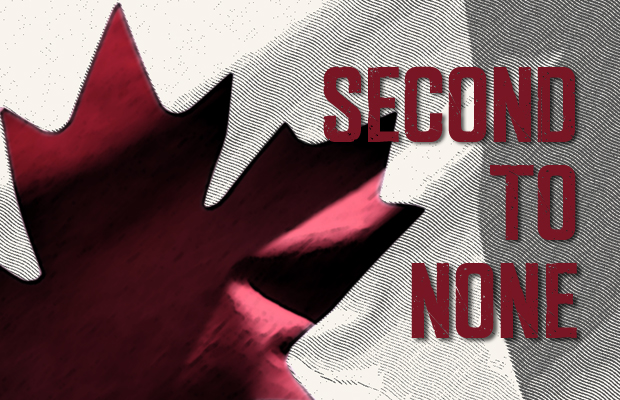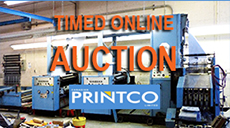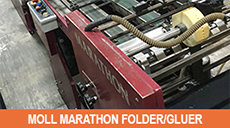
|
|
| Home › Articles › Here |
|

|
||||||||||||||||
| By: Nick Howard | Date: October 2016 | Contact the Author |
Part 1 | Part 2 |
||||||||||||||||
|
Printing push Speaking of Winnipeg, a Dutch immigrant arrived in Canada during the 1950s to begin a new life. The Netherlands was still recovering from the ravages of the Second World War and Gerald (Gerry) Kuik, a printer by trade, struggled mightily during those early years and made many sacrifices to build what would become a gleaming example of what is good about Canada. In 1962, Premier Printing started small, catering to local businesses in Winnipeg. Forms, flyers, business cards and envelopes helped to propel Premier Printing to steady growth. Family members joined in and soon it was evident Premier with a very strong moral compass to boot, was about to do something wonderful. By the mid 1980’s Premier, under Gerry’s guidance created the “Premier School Agendas”. Soon they couldn’t keep up with demand. The United States market absolutely loved the product and it seemed every child from coast to coast from primary school right through to Colleges and Universities, were using the planners. So large was the task to produce these books all sorts of US printers were drafted to get them out on time. Through all this growth the values Gerry planted have remained to this day with family still at the helm developing new products for tomorrow. Jones and Marcoux In the southwest city of London, Ontario, two partners began a print shop in 1882. Henry Jones and Frank Lawson formed Lawson and Jones. Lawson continued on to become the dominant printer in London for the next 90+ years but Henry Jones entered the growing packaging business in 1920 starting Jones Box and Label. But it was to be scion Bob Jones who took the business to new heights. Jones developed a reputation for creativity and confidence in a segment that looks for these traits: the pharmaceutical industry. Bob Jones was a very early pioneer in coating in-line having converted an old Harris press by extending the delivery and applying coatings on boxboard. Jones then went into the flexo label business and the prescription container segment. Jones Box and Label wasn’t just a carton and label printer anymore. Today operating as Jones Packaging they are a worldwide respected firm with plants in Canada and the UK. Today with family at the helm Jones continues its remarkable story of industry leading products. Back in January 2016, Jones Packaging Inc., headquartered in London, Ont., as a global provider of packaging solutions for healthcare and consumer brands, announced it was entering into a commercial partnership with Norway’s Thin Film Electronics ASA (Thinfilm), which develops printed electronics and smart systems, including technologies for Near Field Communications (NFC). Together the two companies planned to integrate Thinfilm’s recently branded NFC OpenSense technology into paperboard pharmaceutical packaging and, at the same time, develop what Jones describes as key manufacturing processes for its high-speed production lines. The London packaging company has now successfully completed this integration to deploy OpenSense tags at its converting facility. The customized Jones production line can apply and read up to 15,000 tags per hour. Jones explains Thinfilm’s Tag Talks First protocol is a key feature of the OpenSense tag and enables a read-speed that is up to 20 times faster than conventional NFC solutions. This read-rate is well suited, Jones explains, for its highspeed, high-volume production lines. Jones and Thinfilm will also collaborate to engage top global pharmaceutical companies to integrate the smart technology into Rx and over-the-counter product packaging. The Jones/Thinfilm smart packaging collaboration is funded, in part, by grants from both the Swedish and Canadian governments. Jones explains NFC OpenSense tags are thin, flexible labels that can detect both a product’s “factory sealed” and “opened” states and wirelessly communicate contextual content with the tap of an NFC-enabled smartphone. The tags contain unique identifiers, continues Jones, that make it possible for pharmaceutical companies to authenticate products and track them to the individual-item level using software and analytics tools. In addition, Jones explains the tags remain active even after a product’s factory seal has been broken, which enables both brands and medical staff to extend the Rémi Marcoux began his career as an accountant. The ultimate bean counter one might say. In 1967, Marcoux went to work for Quebecor and rose up to become (the founder) Pierre Péladeau’s right hand man. But in 1976 Marcoux left Quebecor and with two partners purchased a small printer in Ville Saint-Laurent. This was the beginning of GTC Transcontinental Group Ltd. (now called TC Transcontinental). The early development of newspaper inserts flourished and under Marcoux’s guidance Transcontinental went on to eclipse his former employer – Quebecor, and become Canada’s largest printer as well as North America’s fourth largest - with revenues of two billion dollars. The early vision Marcoux and his partners had continues as Transcontinental are re-inventing themselves all over again. Early focus on publishing and owning titles has now also continued into new areas of print and content distribution. Recent forays into packaging are already changing the company makeup. From what began as flyers and penny savers has grown solidly to be a force to be reckoned with on both sides of the border. Cascades In 1964, Bernard and Laurent Lemaire purchase the closed Dominion Paper Company Mill in Kingsey Falls Québec. With the later addition of another brother- Alain in 1967, Paper Cascades was on a roll. Recycling industrial wastes, especially paper fibre, was not easy. But with dedicated employees and continual forward thinking processes Cascades has today eclipsed anything the Lemaire family ever hoped for. Entering the packaging and tissue business bolstered their presence in recycled materials as they still have their head office in the small town (population 2,000) of Kingsey Falls. Today Cascades is an almost four billion dollar company with operations around the world and in several key segments. Truly a remarkable story of intense hard work and persistence in a world now more than ever, thinking green. The Lemaire brothers knew this before anyone else. Canada has a lot to be proud of with these leaders in the printing industry. They are not alone and we are making more entrepreneurs who will bring about new changes to an industry that must continually transform itself. Some may not end up running billion dollar businesses but it’s not just the dollars that make us successful. It’s how we build businesses and enrich the lives of our employees and their families. Canada is more of a state of mind being that most of us have roots elsewhere. We are unique that way. I want to see Canada be that country where we are seen as a Bastian of fairness and philanthropy. Where we embrace new immigrants and encourage openness and fairness. Whether you are from Mumbai or Guangzhou. Rotterdam or Tehran, Canada is all of us. Women and men running today’s printing businesses should be very proud of our “Made in Canada” success stories. Let’s continue and go out and prosper. |
|||||||||||||||||
Contact the Author |
|||||||||||||||||
|
|||||||||||||||






